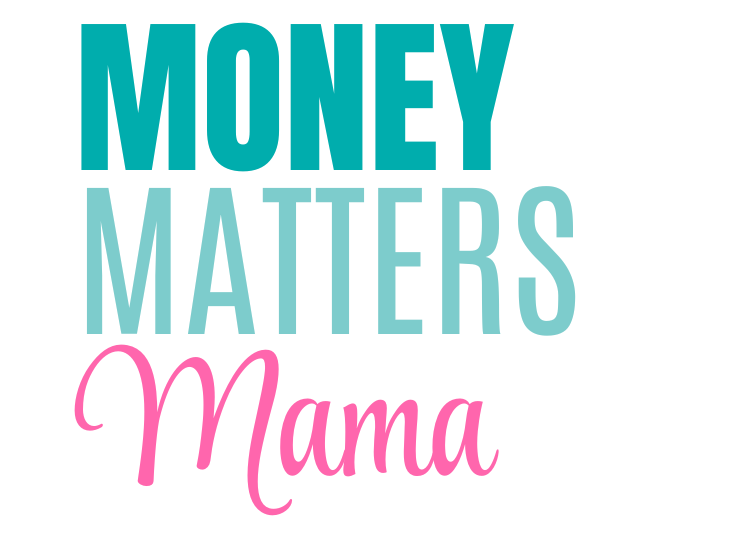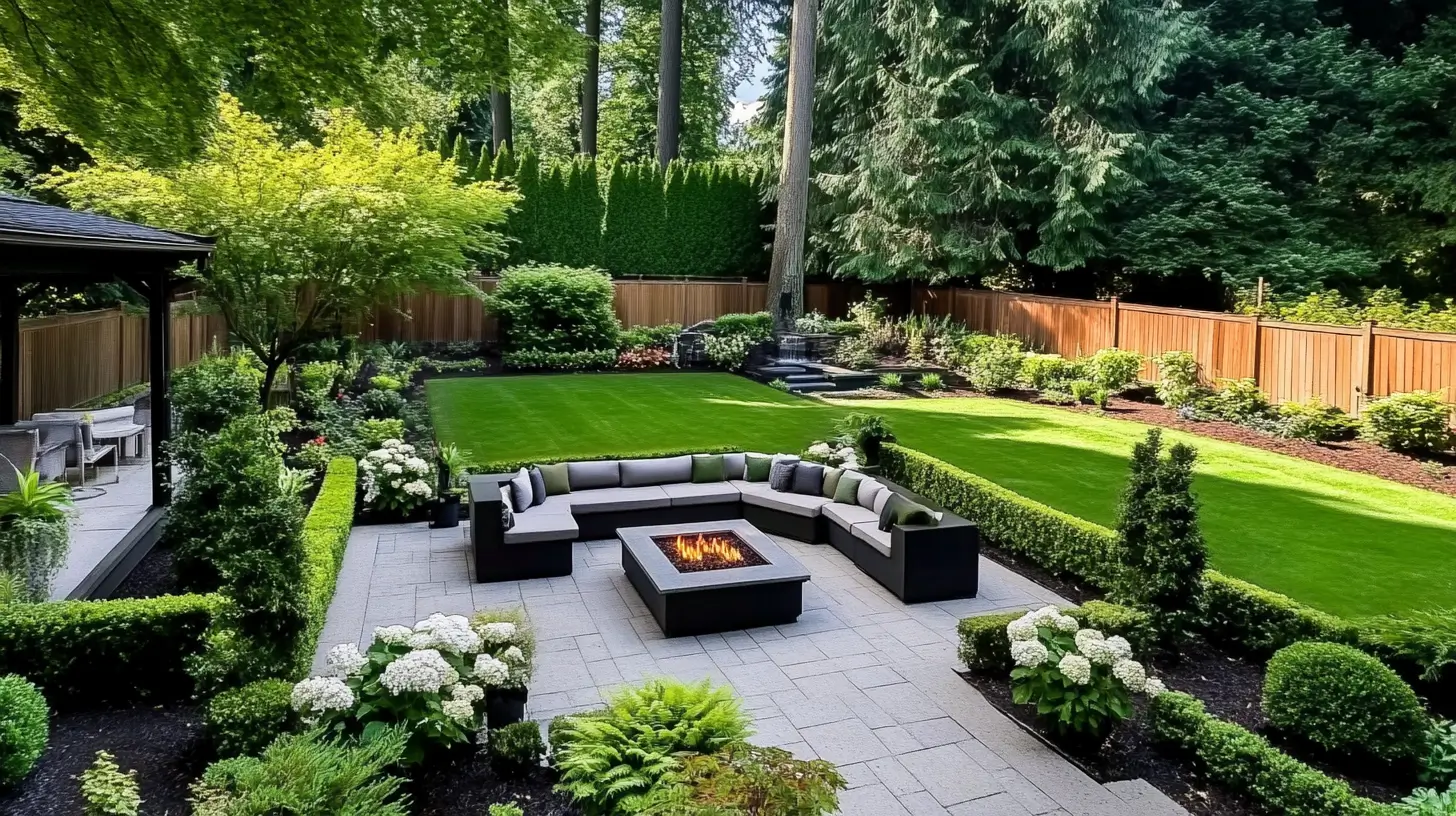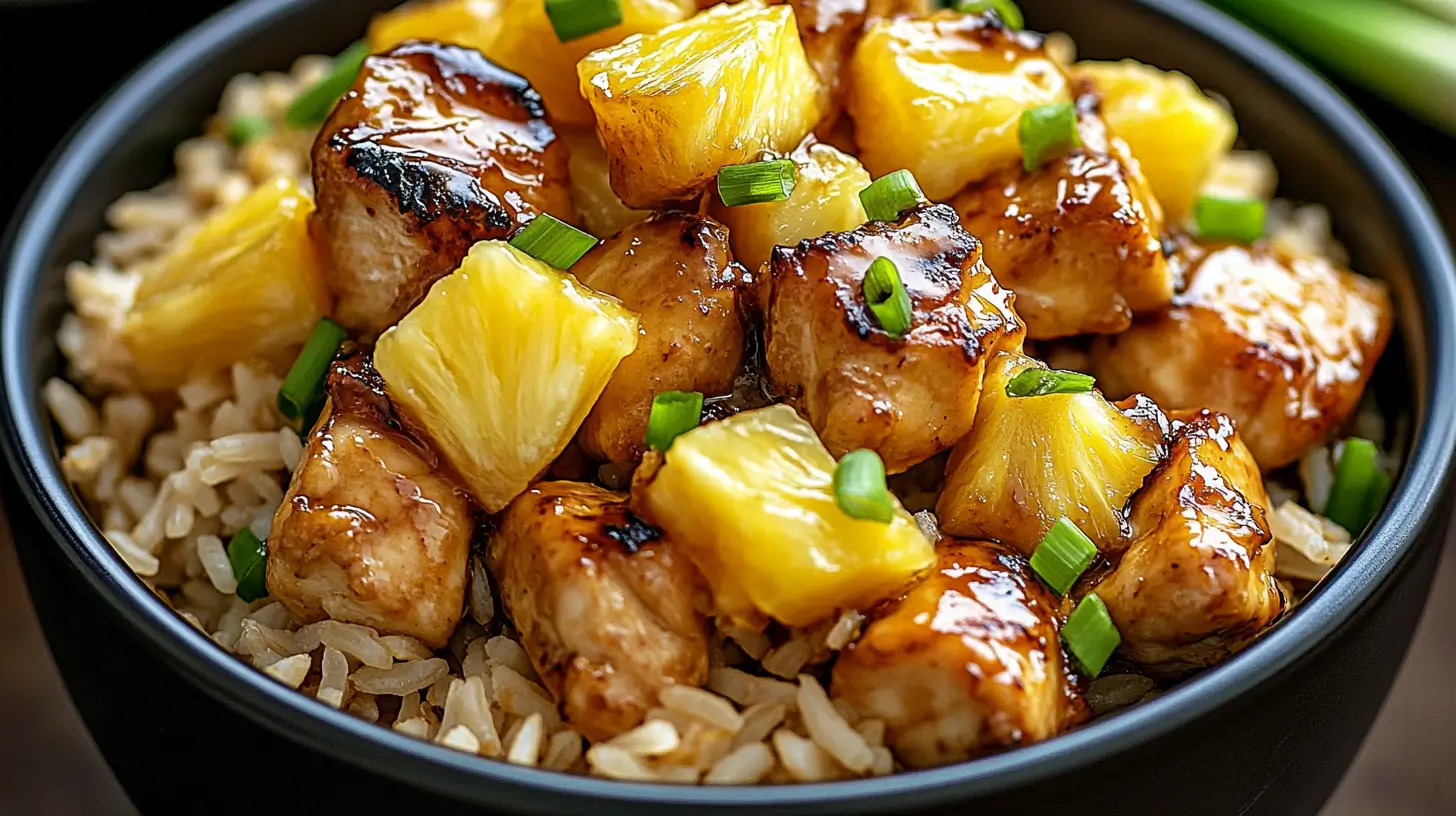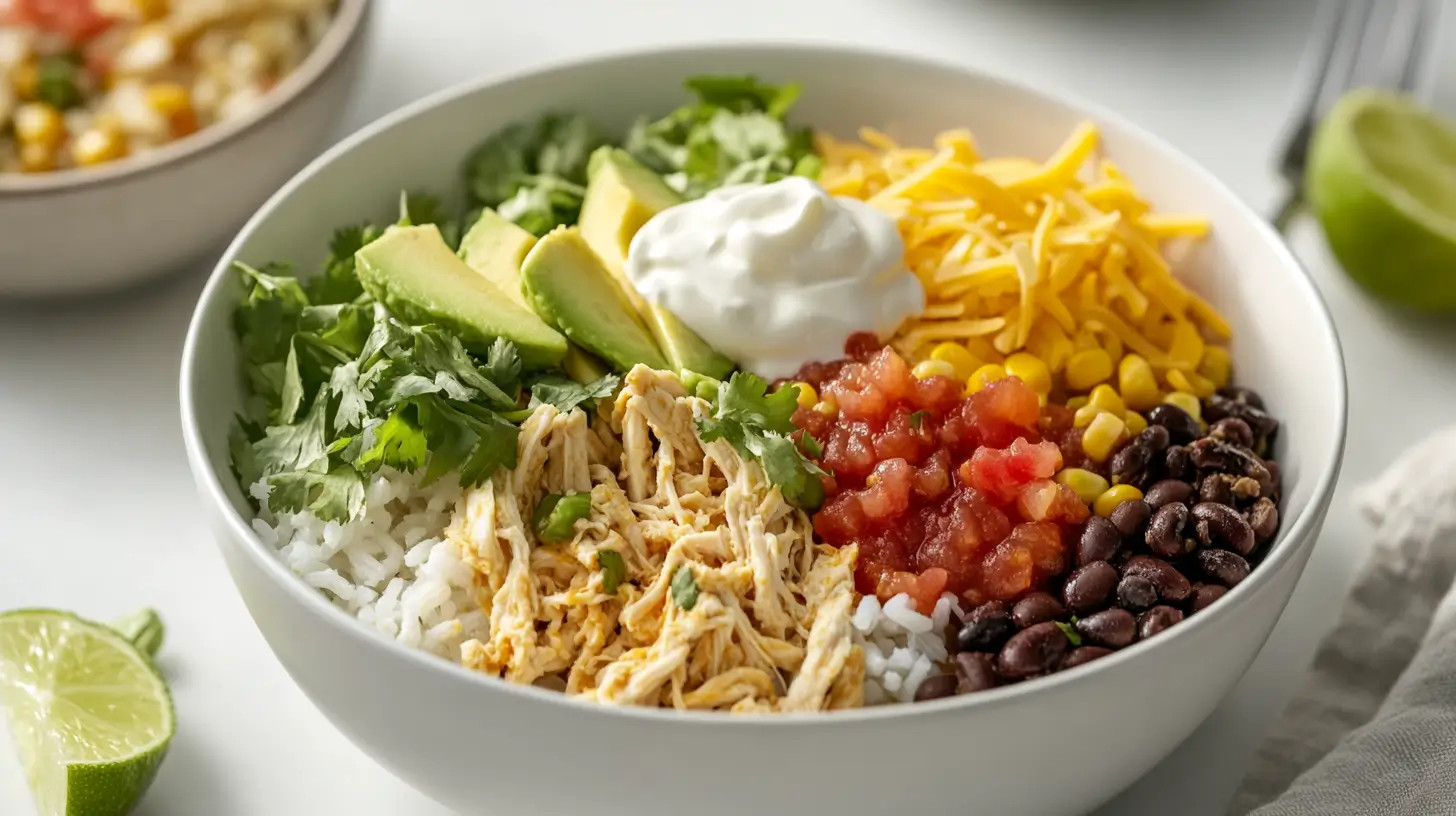When I first started thinking about garden design, it felt kind of overwhelming. The pictures I saw online looked pricey, complicated, and like you had to be part landscape artist to pull it off. But let me tell you—garden design doesn’t have to be fancy, expensive, or stressful. You don’t need a giant backyard or a big budget. You just need a few smart ideas, a little creativity, and some time to play around with what you already have.
In this post, I’m going to walk through everything in a super simple way. I’ll share ways to make your outdoor space look cute, cozy, and inviting—without spending a bunch of money. We’ll talk about things like how to start small, how to reuse things from around the house, and how to bring in color with things that cost next to nothing. It’s all about making things work for you, your space, and your wallet.
Whether you’ve got a big yard, a small patio, or just a balcony with a couple of pots, there’s something here for you. And I’ll keep it real the whole time. No pressure. No perfect Pinterest vibes. Just some ideas that are super practical and easy on the wallet!
If you want your garden to feel like your favorite spot to hang out, you’re in the right place. By the end of this post, you’ll feel confident enough to try something new, even if it’s just adding a potted plant or moving a chair around. We’re keeping it relaxed, doable, and down-to-earth. Let’s talk through all the little ways you can turn your space into something you’ll love stepping into every day.
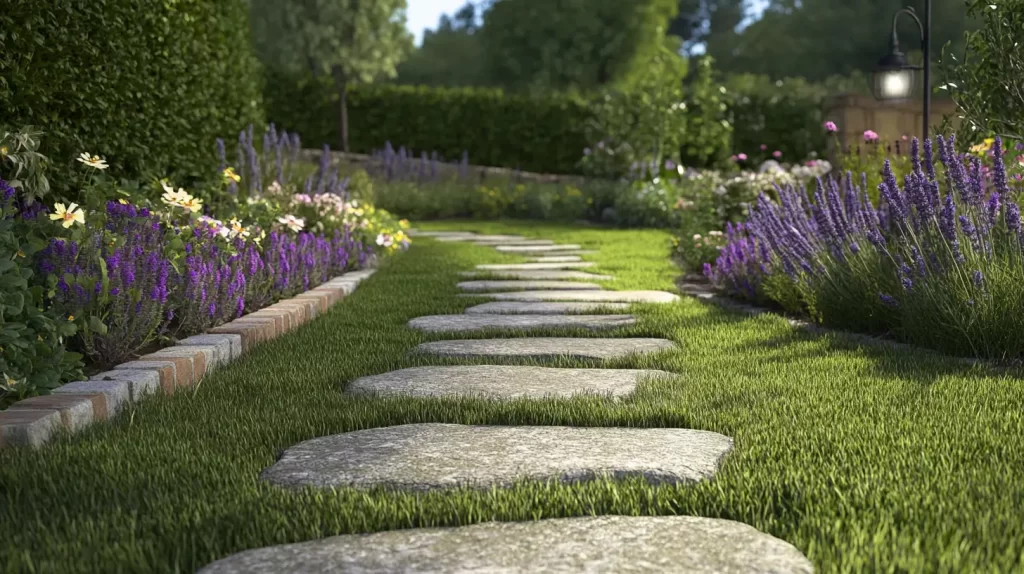
This site includes affiliate links; you can check the disclosure for more details.
Start Small with Your Garden Design
You don’t need to tackle your whole yard at once. Start small. Pick one area and focus just on that. You’ll be surprised how much a little change can make a big difference.
Here’s how to get going without going overboard:
- Choose a small space, like a corner or one flower bed.
- Clear out any weeds or clutter.
- Add one or two plants to see how they do.
- Move things around until it feels right.
Use items you already have. Garden design doesn’t always mean buying new stuff. You can:
- Repurpose old pots, baskets, or buckets.
- Use leftover paint to refresh plant stands.
- Add string lights you already own for cozy evening vibes.
Think about what you want from the space:
- A quiet spot to read?
- A place to sip your morning coffee?
- A colorful space to enjoy with the kids?
Once you know what you want, you can design around that. Keep it simple and focused. It’s easy to add more later.
If you’re not sure where to start, here are some easy things to try:
- Set out one potted plant on a stool.
- Lay down an outdoor rug you already own.
- Bring out a chair and small table.
These small moves get the ball rolling without feeling like a big project. When you work bit by bit, you keep the fun and skip the stress. Garden design becomes something enjoyable, not overwhelming. Starting small lets you build confidence, try new ideas, and avoid spending money all at once. And it still makes your space look cute and cozy while staying on budget.

Use Containers for Easy, Budget-Friendly Design
Containers are one of the easiest ways to change up your garden design. You don’t need a big yard to use them, and they don’t cost much. Just a few can really pull a space together.
What’s great about containers?
- You can move them around.
- You can swap out the plants with the seasons.
- You can use almost anything as a container.
Seriously, almost anything can hold a plant. Try:
- Old boots
- Tin cans
- Plastic bins
- Cracked bowls
- Worn-out kitchen pots
Just poke a hole in the bottom for drainage, and you’re good to go.
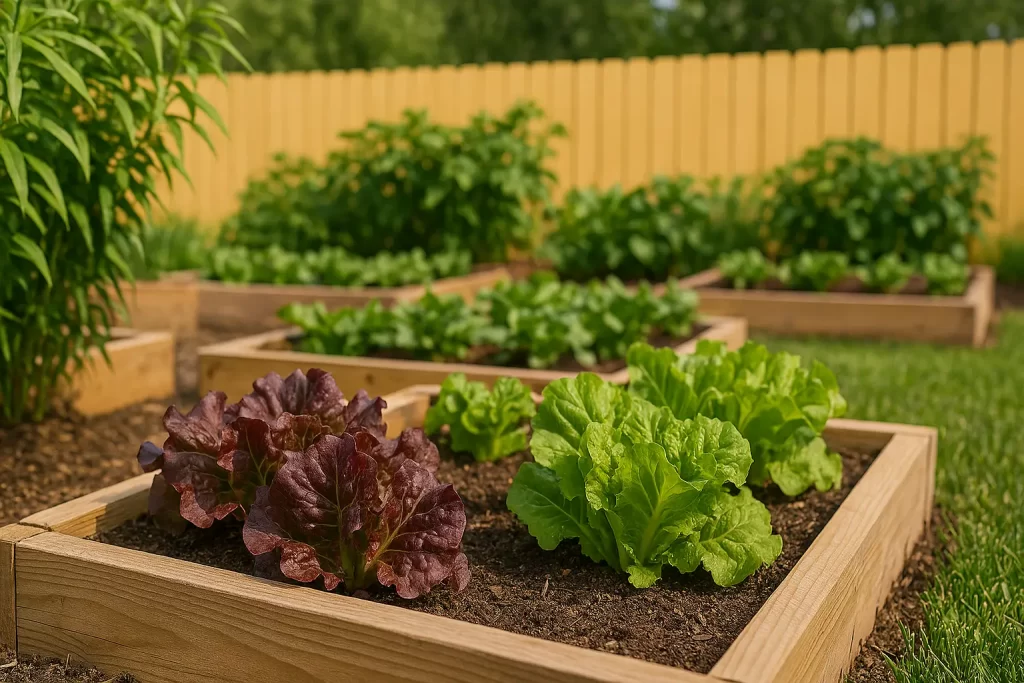
Container gardening is perfect for renters or people with patios. You don’t need to dig. You don’t need tools. Just set things out where you want them.
Try grouping containers together. It makes a bigger impact:
- Place tall plants in the back.
- Fill the middle with colorful flowers.
- Add a few trailing vines up front.
Don’t stress about matching. Use different shapes and colors to make it fun. It’s about showing your personality. That’s what makes garden design feel personal, even in a small space.
Want to keep it cheap? Ask around:
- Friends might have extra pots they’re not using.
- Some local garden centers give away cracked pots for free.
- Look on Facebook Marketplace for freebies.
Containers also help with control. If one plant isn’t happy, you can move it to a different spot. If one dies, it’s not the end of the world. Just try something else.
Containers keep things flexible, fun, and affordable. Great for anyone who is just starting out or has a cozy little space!
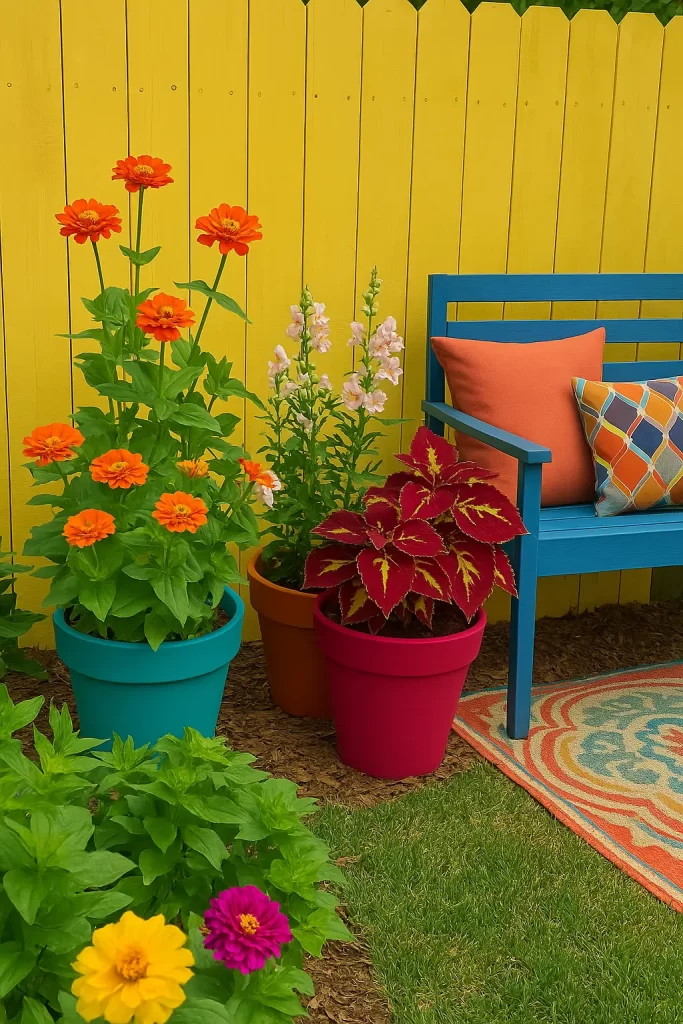
Add Color Without Spending a Ton
Color changes everything. A pop of color can make a plain space feel cheerful. And you don’t need to buy a bunch of flowers to get it.
Here are budget-friendly ways to add color to your garden design:
- Paint a fence or a small wall.
- Use colorful outdoor pillows on chairs or benches.
- Wrap planters with bright fabric or ribbon.
- Hang painted tin cans as flower holders.
You can also add color through the plants themselves. Choose a few that stay bright without a lot of care:
- Marigolds
- Petunias
- Zinnias
- Coleus
- Snapdragons
Grab some little starter plants, or if you’ve got the time, grow them from seeds! Seeds cost less and give you more for your money.
Another trick? Pick up a few solar lights that change colors. They’re usually cheap and make the space fun after dark.
Here’s a simple list of color ideas:
- Use a red chair in a green space.
- Hang blue glass bottles from a tree.
- Paint rocks and scatter them in your flower beds.
- Lay down a patterned mat near your seating area.
Mix bold shades with softer ones to keep it balanced. Even adding just one splash of color can bring the whole space to life.
Don’t feel like you need a master plan. Just add little bits of color as you go. That’s part of the fun. Garden design doesn’t need to be stiff or perfect. The goal is to create a space that makes you smile.

Create Zones for Different Activities
Even small yards or patios can have “zones.” Breaking your space into little areas helps you figure out what goes where. And it gives your garden design a nice flow.
Think about how you use the space:
- Do you eat outside?
- Do the kids play there?
- Do you need quiet space for yourself?
Once you know what you need, divide the space into sections.
Here’s how:
- Use outdoor rugs to show where the seating area is.
- Add a small border or row of pots to separate areas.
- Hang curtains or tall plants for privacy in one zone.
You don’t need walls or fences. Just use what you have to define each spot.
Ideas for different zones:
- Relaxing corner: A comfy chair, some string lights, and a side table.
- Kids’ play spot: A sandbox, water table, or picnic blanket.
- Plant corner: A few raised beds or rows of containers.
Keep each space simple and easy to use. You don’t want to fill it up so much that it feels cluttered. Even two or three zones in a small space can make it feel bigger and more useful.
You can change your zones over time. If the kids outgrow their play spot, turn it into a flower patch. If you stop using a seating area, use it for veggies.
Garden design is flexible. What works now might not work later, and that’s okay. Zones give you structure without locking you into one setup forever.
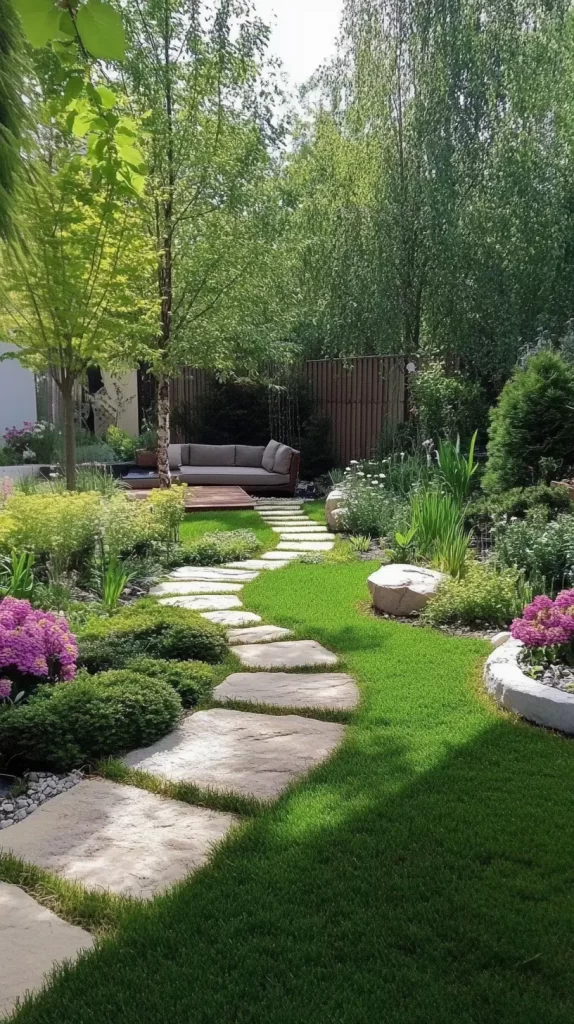
Use What You Already Have
Before you buy anything new, walk around your house. Look at what you already have. You’ll be surprised how much you can reuse in your garden design.
Here are some ideas to get you started:
- Use old mugs or teacups as tiny planters.
- Stack cinder blocks to create a plant shelf.
- Turn an old dresser into a flower bed.
- Use a wooden crate as a planter box.
Look at things with fresh eyes. If it holds dirt, it can probably hold a plant.
You can also borrow decor from inside:
- Throw pillows for seating areas.
- Lanterns or candles for nighttime.
- A mirror to reflect light and make small spaces look bigger.
Get creative with structure, too:
- Use leftover bricks to edge a flower bed.
- Lay stepping stones from old tiles.
- Make a trellis from sticks and twine.
This kind of garden design saves money and cuts down on waste. Plus, it gives your space a unique touch.
Don’t forget about paint. A little paint goes a long way:
- Spray-paint flower pots.
- Brighten up old furniture.
- Add stripes or patterns to plain containers.
Make it fun, not perfect. That’s the best part about using what you already have. You’re not afraid to mess it up or try something new. And every piece has its own story.
Before you toss anything out, ask yourself, “Can I use this in the yard somehow?” Nine times out of ten, the answer is yes.
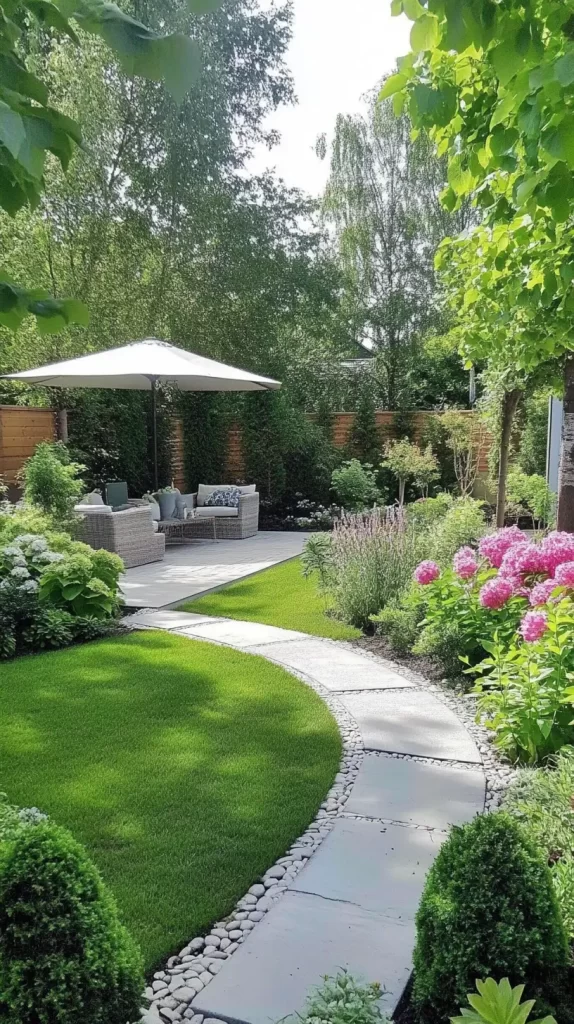
Make a DIY Path Part of Your Garden Design
Let’s talk about paths. I think adding a simple walkway can completely change how your space feels. A little path adds structure, leads the eye, and just makes everything look more “put together.” And the best part? You don’t need to hire anyone or spend much. You can totally create your own path in your garden design using things you probably already have or can grab for a good price!
Here are a few fun and easy ways to make your own garden path:
- Use stepping stones: You can find them at the hardware store or even make your own with cement mix and a mold.
- Gravel walkways: A bag or two of pea gravel can go a long way. Lay it out where you want the path, edge it with bricks or logs, and you’ve got a walkway.
- Brick or paver path: If you have leftover bricks, these make a charming, rustic path. No mortar needed—just press them into sand or dirt.
- Wood slices: If you’ve had a tree cut down or know someone who has, ask for some slices of the trunk. Lay them like stepping stones.
Here’s what I learned from doing this on a tight budget:
- Plan your shape first. Curved paths feel more natural.
- Use a shovel to dig down a couple inches before laying your materials.
- If you’re using gravel, add weed cloth underneath so weeds don’t poke through.
Paths help with muddy spots and keep your shoes clean, too. They also guide people through your space, which makes your garden design feel thoughtful. It’s amazing how something so simple adds that cozy, finished look. And really, you’ll feel proud every time you walk along something you built yourself. That’s a good feeling.

Grow Vertical to Maximize Garden Design in Small Spaces
If your yard is tiny or you’re working with a balcony, don’t worry. You can still create something special by going up, not out. Vertical garden design is a fun way to save space while still getting that lush, green look we all love. It’s practical, it looks great, and it gives your plants a chance to shine—even when floor space is limited.
Here are some simple ways to grow up:
- Use hanging planters: Hang them from hooks on a fence, railing, or wall.
- Try a tiered plant stand: Stack your plants in layers to show them off.
- Set up a wall planter: Use an old shoe organizer or a wooden pallet and turn it into a living wall.
- Lean a ladder against a wall: Add small pots to each step. Cute and easy.
Vertical gardening is especially great for herbs, flowers, and small veggies. Things like:
- Lettuce
- Strawberries
- Basil
- Petunias
- Mint
They grow well in containers and don’t take up much space.
Tips for keeping vertical plants happy:
- Make sure each plant gets enough sunlight.
- Water from the top and let it drip down.
- Keep the heaviest pots near the bottom to keep things sturdy.
The best part about vertical garden design is how it makes even the smallest space feel full of life. It’s like stacking beauty right in front of your eyes. Plus, it helps keep pests away since the plants are up high. So if your outdoor space is more “postage stamp” than backyard jungle, try growing up. You’ll be surprised how much you can do with just one wall and a few hooks.
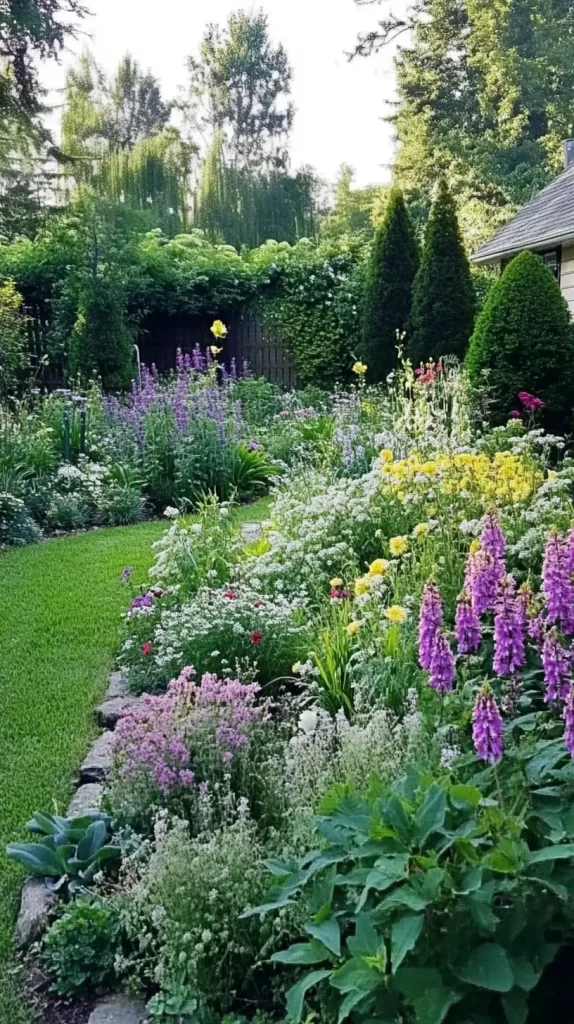
Attract Pollinators With Smart Garden Design
Let’s talk about the real garden heroes—pollinators. Bees, butterflies, and even hummingbirds help plants grow, bloom, and produce fruit. If you’re into budget-friendly garden design, bringing in pollinators is a smart move. It keeps your garden happy, healthy, and buzzing with life—literally.
Here’s how to attract them without spending a lot:
- Plant flowers they love: Think bright, single blooms like daisies, sunflowers, and coneflowers.
- Use native plants: These grow well in your area and are already part of the local ecosystem.
- Skip pesticides: They hurt the very pollinators you’re trying to invite in.
- Add a shallow water dish: Bees and butterflies need a drink too.
Good plants for pollinators:
- Lavender
- Bee balm
- Black-eyed Susans
- Zinnias
- Milkweed (especially for monarchs)
Even just a few of these scattered around can make a big difference. You don’t need a whole meadow. A couple of well-placed pots work just fine.
Some other fun, easy touches:
- Use bright colors like orange, yellow, and purple to grab their attention.
- Place flowers in sunny spots—they like warmth.
- Add a hummingbird feeder with sugar water (just no red dye).
When you think about garden design, think beyond just looks. Think about making your space a welcome stop for helpful visitors. Pollinators bring your garden to life. They also help your plants thrive, especially if you grow veggies. A buzzing garden is a happy garden. And it doesn’t take much to invite them in—just a few simple choices that go a long way.
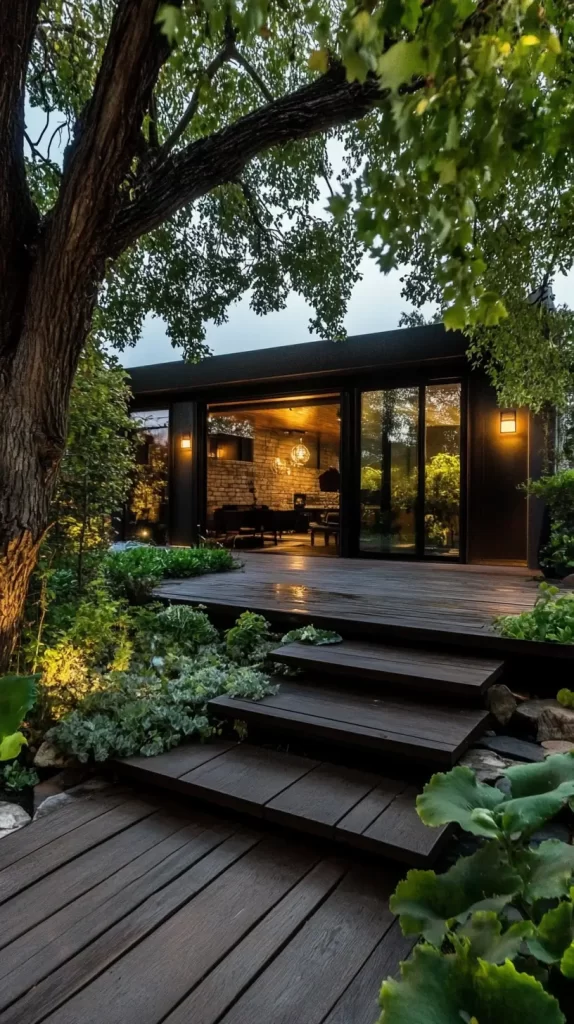
Final Thoughts on Budget-Friendly Garden Design
Garden design doesn’t have to be fancy. And it doesn’t have to cost much either. You just need simple ideas and a little creativity. Here’s what we went over:
- Start small with just one area.
- Use containers to create flexible spaces.
- Add color using paint, fabric, or cheap plants.
- Break up your space into zones.
- Repurpose things from inside your home or garage.
These tricks help you keep costs down while still making your outdoor space feel special. And you don’t need to finish everything all at once. You can do one little thing each weekend and still make progress.
The key is to enjoy the process. Don’t overthink it. Don’t worry if it doesn’t look like the pictures online. Your space should reflect you, not someone else’s style.
Use what you have. Try new things. Move stuff around. Switch out plants if they don’t work. That’s all part of the fun.
If you love how it looks, that’s what matters. Not the price tag.
You can even find tons of fresh ideas on Pinterest by searching for “budget garden ideas” or “small garden DIY.” Just don’t let those perfect photos make you feel like you need to spend more. Your space is for you.
One potted plant and a painted stool might be all it takes to turn your space into your favorite place to sit.
So don’t wait. Pick one thing from this post and try it today. You’ll see how even the smallest change can totally shift how your garden feels.
That’s the beauty of simple, budget-friendly garden design.
